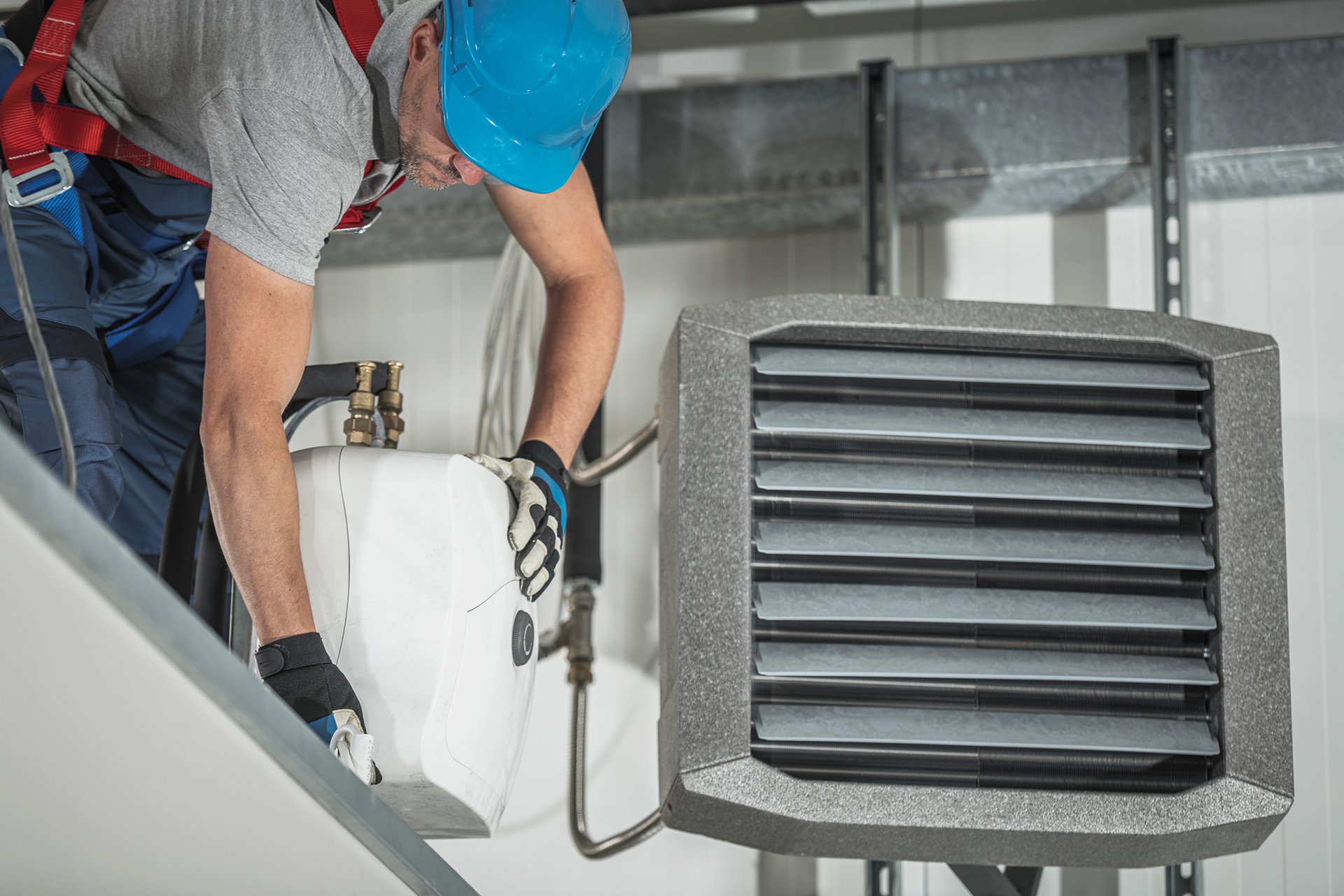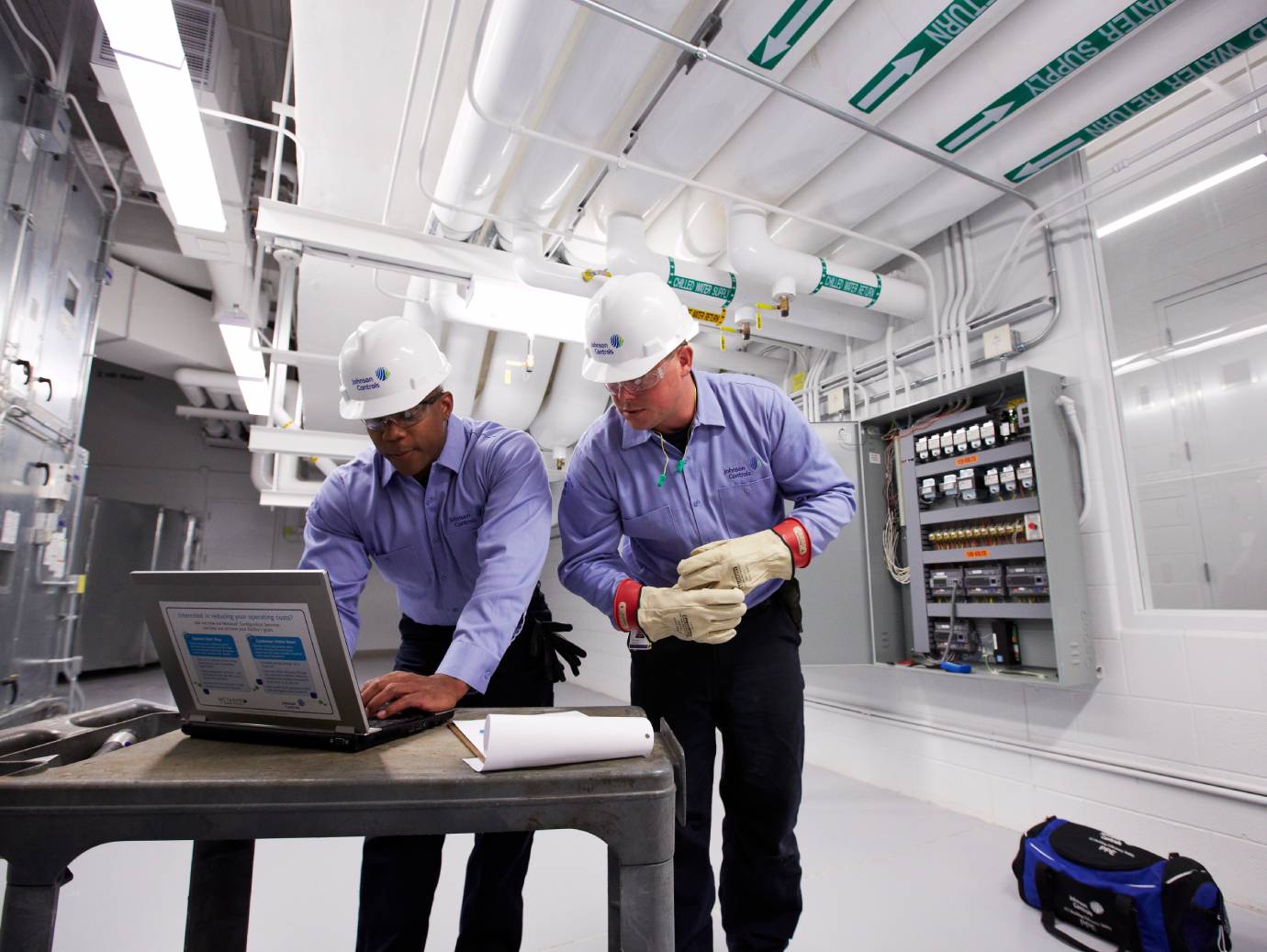Warning Signs It's Time for a furnace replacement
Warning Signs It's Time for a furnace replacement
Blog Article
Exactly How a Heatpump and Furnace Collaborate to Enhance Your Home's Heating Performance
Understanding how a heatpump and heating system interact is important for property owners looking for reliable heating solutions. Each system has its staminas, providing a well balanced method to home convenience. The heat pump succeeds in moderate temperatures, while the furnace delivers quick warmth throughout extreme cold. This harmony not just lowers energy costs yet additionally improves the life expectancy of both home appliances. What elements affect this collaboration, and exactly how can house owners optimize their benefits?
Understanding Warmth Pumps: Exactly How They Function
Although many people might be unknown with their inner functions, warmth pumps play a vital role in modern heater. These tools run by moving warm from one location to another, making use of the principles of thermodynamics. In chillier months, a heat pump essences warm from the outdoors air, ground, or water, and transfers it inside to warm up the home. Conversely, throughout warmer months, it can reverse the process, serving as an a/c unit by expelling heat from inside to the outside.Heat pumps include an evaporator, compressor, condenser, and expansion shutoff. The cooling agent within the system takes in warm as it evaporates at low temperature levels and pressures. The compressor then boosts the pressure and temperature of the refrigerant, allowing it to launch heat as it condenses. This efficient procedure can considerably lower energy consumption contrasted to traditional home heating approaches, making heatpump a sustainable option for environment control in homes.
The Role of Furnaces in Home Heating
Heaters play a crucial duty in home heating by providing a trusted resource of heat throughout the chillier months. They operate by creating heat with burning or electrical resistance, dispersing it throughout the home through air ducts or radiant systems. The effectiveness of a furnace is commonly determined by its Annual Gas Usage Effectiveness (AFUE) ranking, which shows exactly how successfully the system transforms gas right into heat.Furnaces can utilize numerous energy sources, including gas, electrical power, lp, or oil, permitting house owners to pick the most appropriate choice for their demands. Unlike heatpump, which may have a hard time in severe chilly, heating systems maintain consistent efficiency, guaranteeing that interior temperature levels stay comfy despite outdoor problems. In addition, modern furnaces commonly come outfitted with innovative modern technology, such as clever thermostats and variable-speed blowers, improving their performance and responsiveness. This convenience makes heaters a critical element in all-inclusive home heating techniques.

Benefits of Using Both Solutions With Each Other
Incorporating the staminas of both furnaces and heatpump can result in a much more efficient and reliable home heating service. Using both systems permits homeowners to benefit from the heatpump's power performance throughout milder temperature levels while counting on the heating system for even more extreme cold conditions. This dual method can greatly lower power expenses, as heatpump take in less electricity than typical heating methods when temperature levels are moderate.Additionally, utilizing both systems with each other can boost convenience levels in the home. Heatpump can supply regular, even heating, while heaters can promptly raise ambient temperature levels when needed. Furthermore, the combination of both systems can prolong the life-span of tools by reducing damage on each device, as they share the workload. Inevitably, property owners can enjoy a well balanced, cost-efficient home heating solution that readjusts perfectly to differing climate condition, making certain a warm and welcoming home throughout the winter season.
Exactly How Warmth Pumps and Furnaces Enhance Each Other
When home owners integrate warm pumps and furnaces, they produce a complementary furnace that makes best use of effectiveness and comfort. Heat pumps run by transferring warm from the outdoors air or ground, making them very effective in modest environments. They stand out throughout milder temperatures, offering affordable home heating. On the other hand, furnaces generate heat with combustion or electrical resistance, delivering solid, prompt heat during severe cool conditions.The combination of these 2 systems enables dynamic changes based on temperature level variations. During warmer months or milder winter months days, the heatpump can take the lead, conserving energy and lowering costs. As temperature levels decline, the heater can flawlessly involve, guaranteeing consistent heat throughout the home. This synergy not only enhances power usage however additionally boosts the life expectancy of both systems, as each system runs within its excellent performance array. With each other, they produce a well balanced setting that adjusts to varying climate needs.
Maximizing Performance: Tips for Homeowners
Homeowners can enhance their home heating effectiveness via numerous useful strategies. Developing a normal upkeep schedule, incorporating clever thermostat modern technology, and applying effective insulation and sealing solutions are key actions. These steps not only boost convenience but additionally decrease energy expenses.
Routine Maintenance Arrange
To guarantee optimal home heating efficiency, establishing a routine maintenance schedule is important for any kind of home. Property owners must focus on routine evaluations of both heatpump and furnaces to ascertain peak efficiency. This consists of transforming air filters each to three months, as stopped up filters can significantly decrease efficiency. Additionally, organizing professional maintenance at the very least annually allows technicians to recognize and resolve potential issues before they rise. Home owners must likewise clean the heatpump's exterior unit to stop debris buildup that can hinder air movement. By adhering to a routine maintenance timetable, homeowners not just enhance their heating unit' efficiency yet also prolong their life-span, resulting in greater comfort and minimized power costs throughout the cooler months.
Smart Thermostat Combination
Integrating a smart thermostat right into a home heater can considerably enhance power performance, especially as it permits accurate control over temperature settings. These tools can learn the homeowner's timetable and choices, automatically adjusting the temperature level to enhance comfort while reducing energy usage. For circumstances, they can lower home heating during times when the home is empty, decreasing unneeded usage. Lots of smart thermostats likewise provide real-time power use data, making it possible for house owners to make informed decisions concerning their heating behaviors. Furthermore, remote accessibility through smart device apps enables users to change setups from anywhere, guaranteeing the home is cozy upon return. In general, wise thermostat integration not only boosts comfort however substantially contributes to power financial savings and efficiency.
Insulation and Sealing Solutions
Smart thermostats play a crucial duty in energy performance, but their performance can be significantly boosted by proper insulation and securing options. Home owners ought to focus on shielding walls, floors, and attics to decrease heat loss. High-grade insulation products, such as spray foam or fiberglass, can greatly boost thermal resistance. Additionally, sealing spaces around doors, home windows, and ducts avoids chilly air infiltration and warm retreat. Weatherstripping and caulking work methods for dealing with these leaks - furnace replacement. Normal examinations for air leakages, together with making use of blower door tests, can assist determine problem locations. By spending in insulation and securing, home owners can enhance the performance of their heating systems, inevitably causing minimized energy intake and reduced energy expenses
Typical Myths Regarding Heat Pumps and Furnaces
What misunderstandings border heat pumps and heaters? Several people incorrectly think that heatpump are ineffective this content in cooler environments. In try this website truth, modern-day heatpump are created to operate efficiently also in reduced temperatures, giving trusted home heating throughout winter months. One more usual misconception is that furnaces are always extra efficient than heatpump. Nevertheless, this relies on the certain power sources and performance scores of the units concerned. Some may also assume that using both systems simultaneously is unneeded, however as a matter of fact, this combination can maximize heating efficiency, particularly during severe weather. In addition, people often presume that warmth pumps need consistent upkeep, when actually, they have similar upkeep requires to traditional furnace. By disproving these myths, property owners can make even more enlightened decisions regarding their heating options, eventually resulting in boosted comfort and power performance in their homes.
Upkeep Factors To Consider for Combined Solutions

Regularly Asked Questions
Can Warm Pumps Job Effectively in Incredibly Cold Climates?
Warmth pumps can struggle in incredibly cool climates as a result of decreased performance and warm removal constraints. Advancements in innovation have actually led to designs made for far better performance in such conditions, improving their stability in harsh environments.
For How Long Do Warmth Pumps and Furnaces Usually Last?
Warmth pumps generally last 15 to two decades, while navigate to these guys heating systems have a lifespan of 15 to thirty years. Regular maintenance can extend their longevity, ensuring reliable procedure and reducing the requirement for premature replacements.

What Is the Typical Expense of Installing Both Equipments?
The typical price of installing both a heatpump and a heater commonly ranges in between $5,000 to $10,000 - furnace replacement. Factors influencing this price include system size, installment complexity, and regional labor prices
Are There Tax Motivations for Using Energy-Efficient Heating Solutions?
Many house owners make inquiries about tax obligation motivations for energy-efficient heating systems. Different government and state programs usually offer discounts or credit reports, encouraging the adoption of sustainable innovations to minimize power intake and advertise environmental responsibility.
Just how Do I Choose the Right Size Heatpump and Furnace?
Choosing the best size warm pump and heating system entails calculating the home's square footage, considering insulation top quality, and reviewing regional climate. Consulting a specialist can assure excellent system efficiency and power performance based upon specific demands. ductless mini splits. Understanding how a heat pump and heater job with each other is essential for homeowners seeking reliable heating solutions. In colder months, a heat pump removes warmth from the outdoors air, ground, or water, and transfers it inside to warm up the living room. When homeowners incorporate warm pumps and heating systems, they produce a corresponding heating system that optimizes performance and convenience. Warm pumps operate by transferring heat from the outdoors air or ground, making them extremely reliable in modest climates. Heat pumps can battle in exceptionally cool climates due to reduced effectiveness and warmth extraction constraints
Report this page